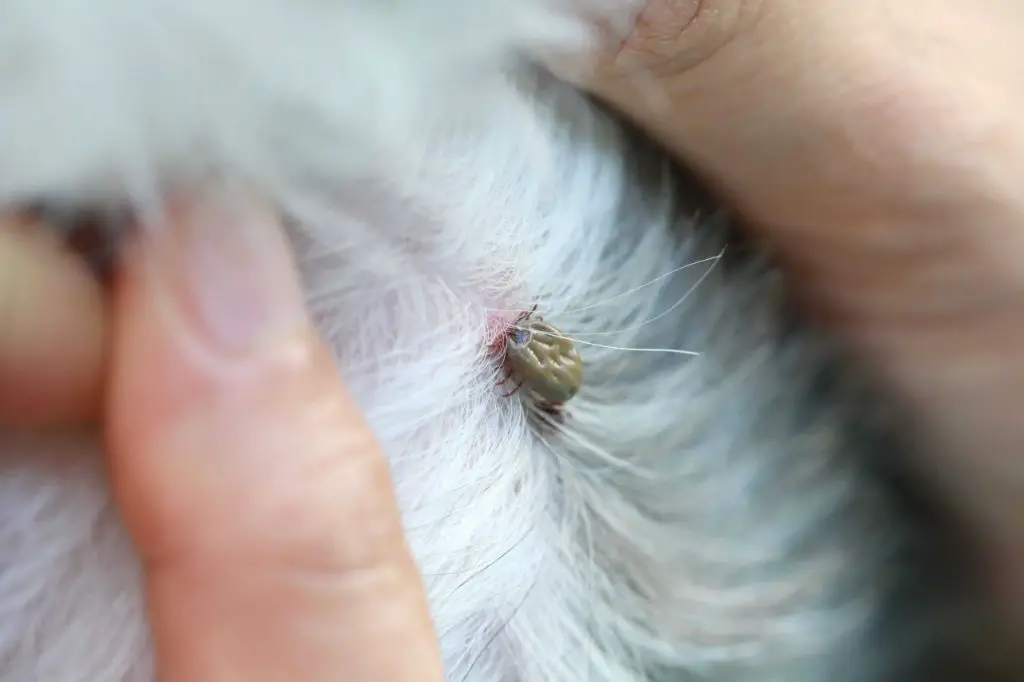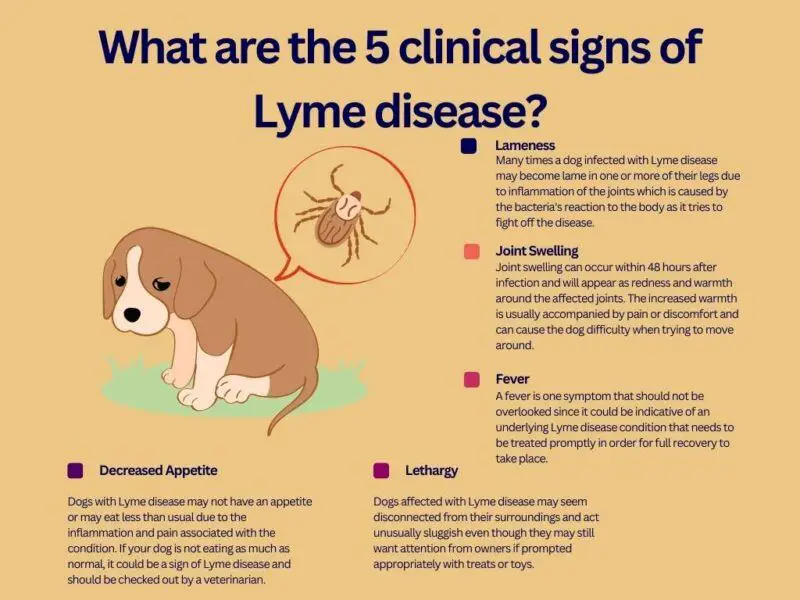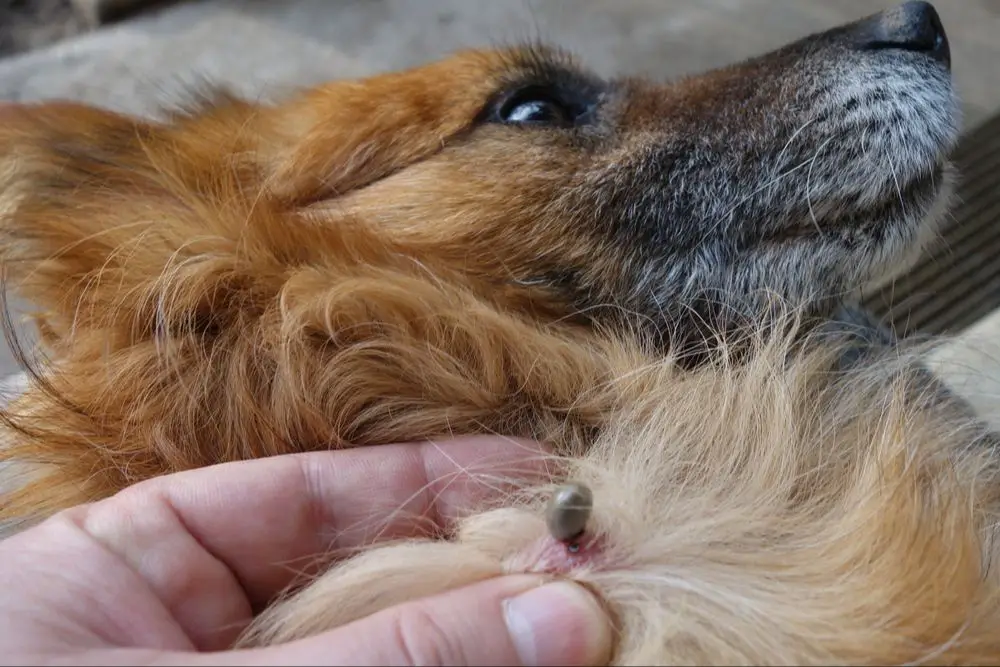Introduction
Ticks are common external parasites that attach themselves to dogs in order to feed on their blood. While many ticks carry diseases that can make dogs sick, not all ticks are harmful. With prompt tick removal and awareness of disease symptoms, dog owners can keep their furry friends safe.
This article provides an overview of ticks on dogs and discusses when tick exposure may be considered relatively harmless. It aims to educate dog owners on tick identification, prevention, and monitoring so they can make informed decisions about their dog’s health and wellbeing.
What are Ticks?
Ticks are small parasitic organisms that feed on the blood of mammals, birds, and reptiles. They are external parasites that live in fields, woods, and yards where they wait to attach to a host. There are two main families of ticks:
Hard Ticks
Hard ticks have a hard protective plate on their back. Some common examples are the deer tick, dog tick, and lone star tick. Hard ticks take one blood meal at every stage of their life.
Soft Ticks
Soft ticks do not have the hard protective plate and are more leathery in texture. The soft brown tick and chicken tick are examples of soft ticks. Soft ticks can take multiple blood meals at every stage of their life.
How Ticks Attach to Dogs

Ticks are parasitic and require blood meals to survive and reproduce. They have specialized mouthparts called a hypostome that contain backward-facing hooks, allowing them to attach to their hosts. Ticks find hosts by detecting animals’ breath and body odors, moisture, warmth, and vibrations.
After questing on the tips of grasses and shrubs, ticks latch onto passing pets and feed until full engorgement. They insert their hypostome into the skin and hang on using the backward-facing hooks. Ticks also secrete a cement-like substance that glues them to the skin.
Ticks go through four life stages: egg, larva, nymph, and adult. After hatching from eggs, ticks must eat a blood meal at every stage to grow, develop and reproduce. Ticks can feed on pets at all three active life stages.
Diseases Ticks Transmit
Ticks can carry and transmit many dangerous diseases to dogs through their bites, some of which can be fatal if left untreated. The most common tick-borne diseases that affect dogs include:
- Lyme Disease – Caused by the Borrelia burgdorferi bacteria, Lyme disease is the most prevalent tick-borne disease in dogs. It attacks the immune system and can cause fever, lameness, swelling, and kidney damage if not treated.
- Anaplasmosis – Caused by Anaplasma bacteria, this disease attacks white and red blood cells. It leads to anemia, fever, weakness, and other issues.
- Ehrlichiosis – A bacterial disease that targets white blood cells. It causes fever, nose bleeds, bruising, and potentially life-threatening blood disorders.
- Rocky Mountain Spotted Fever – Caused by Rickettsia rickettsii bacteria, this disease can lead to fever, swollen lymph nodes, neurological issues, and skin lesions on dogs.
- Babesiosis – A protozoan disease that destroys red blood cells and causes anemia, dark urine, fever, enlarged spleen, and weight loss in dogs.
Prompt diagnosis and treatment is essential for any tick-borne disease in dogs. Left unchecked, they can cause severe discomfort, pain, organ damage, and potentially death.

Signs of Tick-Borne Illness
Some of the most common signs of tick-borne illness in dogs include:
- Fever – An infected dog may develop a fever as its immune system tries to fight off the disease.
- Lethargy – Dogs with tick-borne disease often become less active and more tired.
- Joint pain – Diseases like Lyme disease can cause painful arthritis in dogs.
- Rash at the tick bite site – A red, circular rash may appear around a tick bite within 3-30 days of being bitten.
Other possible signs include enlarged lymph nodes, neurological issues like weakness or incoordination, gastrointestinal problems like vomiting or diarrhea, and respiratory issues like coughing. Pet owners should watch for any unusual symptoms in a dog that was bitten by a tick or exposed to tick-heavy areas.
Risk Factors for Ticks

Certain environmental factors can increase a dog’s risk of picking up ticks. Areas that have large populations of ticks pose the greatest threat. Ticks thrive in moist, humid environments with dense vegetation. Forests, grasslands, marshes, and brush are prime tick habitats. Ticks are also more prevalent in certain seasons. In temperate regions, ticks flourish most in spring, summer, and early fall when the weather is warmer and more humid. Cooler months see fewer active ticks. However, in tropical and subtropical climates, ticks can be a year-round threat. Knowing the tick patterns in your local area can help determine when to take extra precautions against ticks. Limiting time in tick-friendly habitats during peak seasons and staying more in open, dry areas is advisable.
Preventing Ticks on Dogs
There are several effective ways to help prevent ticks from attaching to dogs. Using tick prevention products, performing frequent tick checks, and keeping yards free of ticks are all important in reducing tick exposure.
Tick collars containing pesticides like amitraz or permethrin can kill and repel ticks. These collars work by releasing small amounts of pesticide that spread over the dog’s coat. Spot-on liquid treatments containing fipronil, permethrin or pyriproxyfen can also kill and repel ticks for up to one month. There are also oral and injectable tick prevention products that enter the dog’s bloodstream and kill ticks that bite them.
Vaccines like the Vanguard L4 Lyme vaccine help reduce the transmission of certain tick-borne diseases in dogs. While not 100% effective, they can help lower disease risk when combined with other prevention measures.
Regular grooming and tick checks are also important. Carefully looking through your dog’s coat and feeling for any bumps can help you find and remove ticks before they’ve had time to transmit disease. Keeping your yard free of leaf litter and overgrown vegetation can help reduce tick exposure as well.
Using a combination of tick collars, spot-on treatments, vaccines, grooming and environmental control is the most effective way to protect dogs from ticks and the illnesses they can spread.
Tick Removal
It’s important to remove ticks from your dog properly to avoid leaving the tick’s mouth parts embedded in your dog’s skin or causing the tick to transmit disease. Follow these steps for safe tick removal:
Use tweezers with a narrow, fine tip to grasp the tick as close to your dog’s skin as possible. Try to avoid squeezing or crushing the tick’s body. Grip the tick firmly with the tweezers tips touching the skin and pull it straight out with steady pressure. Do not twist the tick or jerk it quickly.

Avoid using your fingers directly to remove the tick. The tick removal tools sold in pet stores can be ineffective and may not allow you to grip the tick properly. Tweezers provide better leverage and control to remove the tick intact.
After removing the tick, wash the bite area thoroughly with soap and water or an antiseptic cleaner. Dispose of the live tick by drowning it in alcohol or flushing it down the toilet.
Watch for any signs of infection in the bite area like redness, swelling or pus. Contact your vet if you notice these or any symptoms of illness in your dog after a tick bite.
When a Tick Can Be Harmless
While ticks are known to spread dangerous diseases like Lyme disease, Rocky Mountain spotted fever, and others, not all ticks actually transmit disease. There are many different species of ticks, and some are less likely to be infected with pathogens than others. The type of tick, geographic location, and season can all impact the chances of a tick passing on an illness.
Even if a tick is infected, fast removal of the tick can reduce the chances of disease transmission. When a tick first attaches and begins feeding, it does not immediately transmit pathogens. The longer an infected tick stays attached and feeds, the higher the risk it will pass on disease. But if the tick is promptly removed within the first 24-48 hours, there may not be enough time for pathogens to transfer. Quickly finding and removing ticks can help prevent infection.
There are no guarantees that a tick won’t pass on disease, so it’s important to be vigilant. But the chances are greater that a tick will be harmless if it’s removed soon after attachment. Thoroughly checking your dog’s coat daily and removing any ticks promptly are the best ways to avoid problems.
Conclusion
Although ticks are dangerous to dogs due to the various diseases they can transmit, in some cases a single tick may be harmless. If the tick is removed quickly before transmitting any diseases, the risk is very low that the dog will experience any harmful effects.
That said, it is still vitally important for dog owners to take preventative measures against ticks like using tick medication and doing thorough tick checks. Even a single tick has the potential to transmit disease, so vigilance is key. Being aware of the signs of tick-borne illness in dogs and acting quickly if symptoms arise can help mitigate the impact of tick diseases. Ultimately, while an individual tick may sometimes be harmless if dealt with swiftly, the best approach is to be proactive and cautious when it comes to protecting dogs against ticks.